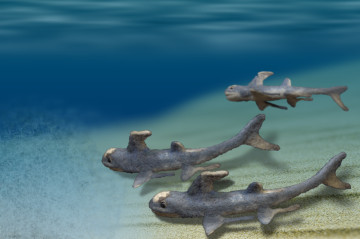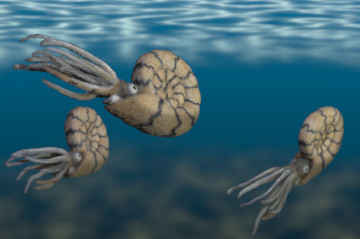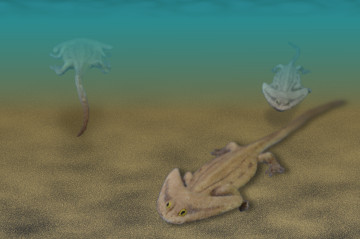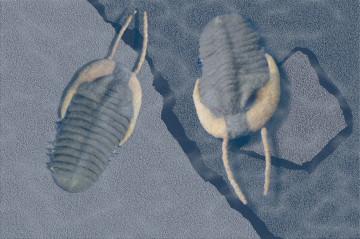- Cambrian
- Ordovician
- Silurian
- Devonian
- Carboniferous
- Permian
Carboniferous Period
From 358.9 million years to 298.9 million years ago.
As the name of the Carboniferous suggests, it is a time when the coal deposit formations was created into broad area around the world.
Euramerica was located in the tropical area, and was warm and humid, while Gondwana was increasing glacification and became cooler. Under the subtropical condition, the swamp and wetland were formed onto the lowland. In such area, horsetails and clubmoss flourished and woody ferns created the large forests, eventually would changed into the major source of the coals. These developed forests absorbed a large quantity of carbon dioxide and released a large aoumnt of oxygen coincidently.
Dead plants and animals deposited onto the swamp were decomposed by the microbes comsuming oxygen, releasing carbon dioxide. But such sediments were too much, and the air was blocked by the water, so that deposits had been accumulating without decomposition. Consequently, oxygen level rose to 35 percent (today is about 21%), and carbon dioxide were decreasing, the world became cooler.
Probably, influenced by high oxygen, arthropods, especially insects became large forms and radiated in the Carboniferous forests. Giant dragonflies were flying around, tremendous millipedes, centipedes, and scorpions were swarming. Giant dragonflies flied around, tremendously large cockroaches, millipedes, centipedes, and scorpions were swarming.
By the end of the Carboniferous, the ancestors of conifers appeared and the land vertebrates were startting to adapt to arider climates.
One of the important events in the Carboniferous was emergence of amniotes, which have a membrane called amnion surrounding the embryo. It is a common ancestor of reptiles and mammals. Having invented an amnion, the tetrapods (Tetrapoda, four-limbed animals) had no need the water environments for spawning and ontogeny and accelerated adaptation for terrestrial habitat.
Afterward, the amniotes divided for Sauropsids and Synapsids. From the former, diapsids appeared, and furthermore, branched into some groups. One evolved into marine reptiles, lizrads and snakes, other one evolved into crocodiles, dinosaurs, birds, and so on. From the latter, mammals and some groups evolved.
In the oceans, sharks and bony fishes, which were ressemble the modern fish in forms, were developed and diversified, while heavy armored fishes were declined. On the sea floor, brachipods, bryozoans thrived, but the trilobites were decreasing.
By the end of the Carboniferous, two supercontinents were getting closer each other, eventually collided and created one supercontinent, Pangaea. Consequentlly, the coastline actually decreased, affecting the shallow water ecosystem. During the Carboniferous and the Early Permian, the world became alternating glacial and interglacial periods just as the Earth does today.
References:
- National Geographics
- Pappas S (2013) Paleozoic Era: Facts & Information Live Sience June 20, 2013
- Smithsonian Environmental Research Center Forces of Change - Atmosphere -
- UCMP - University of California Museum of Paleontolgy - (Legacy Exhibits Online, Tour of Geologic TIme)
- International Commission on Stratigraphy - International Chronostratigraphic Chart v 2023/06.




